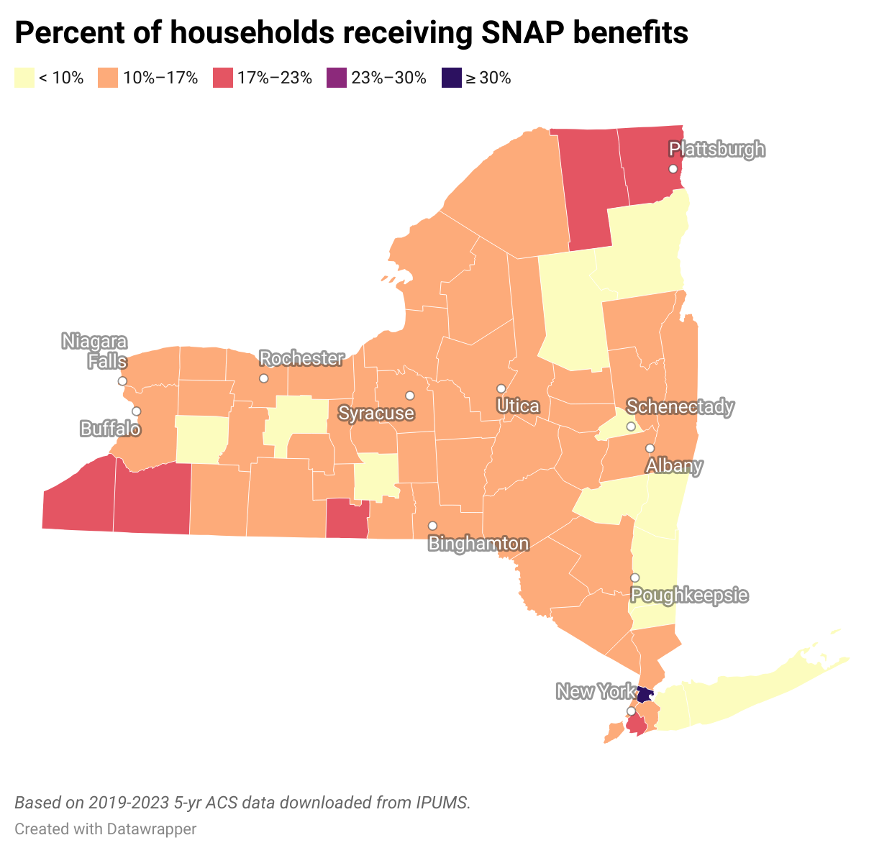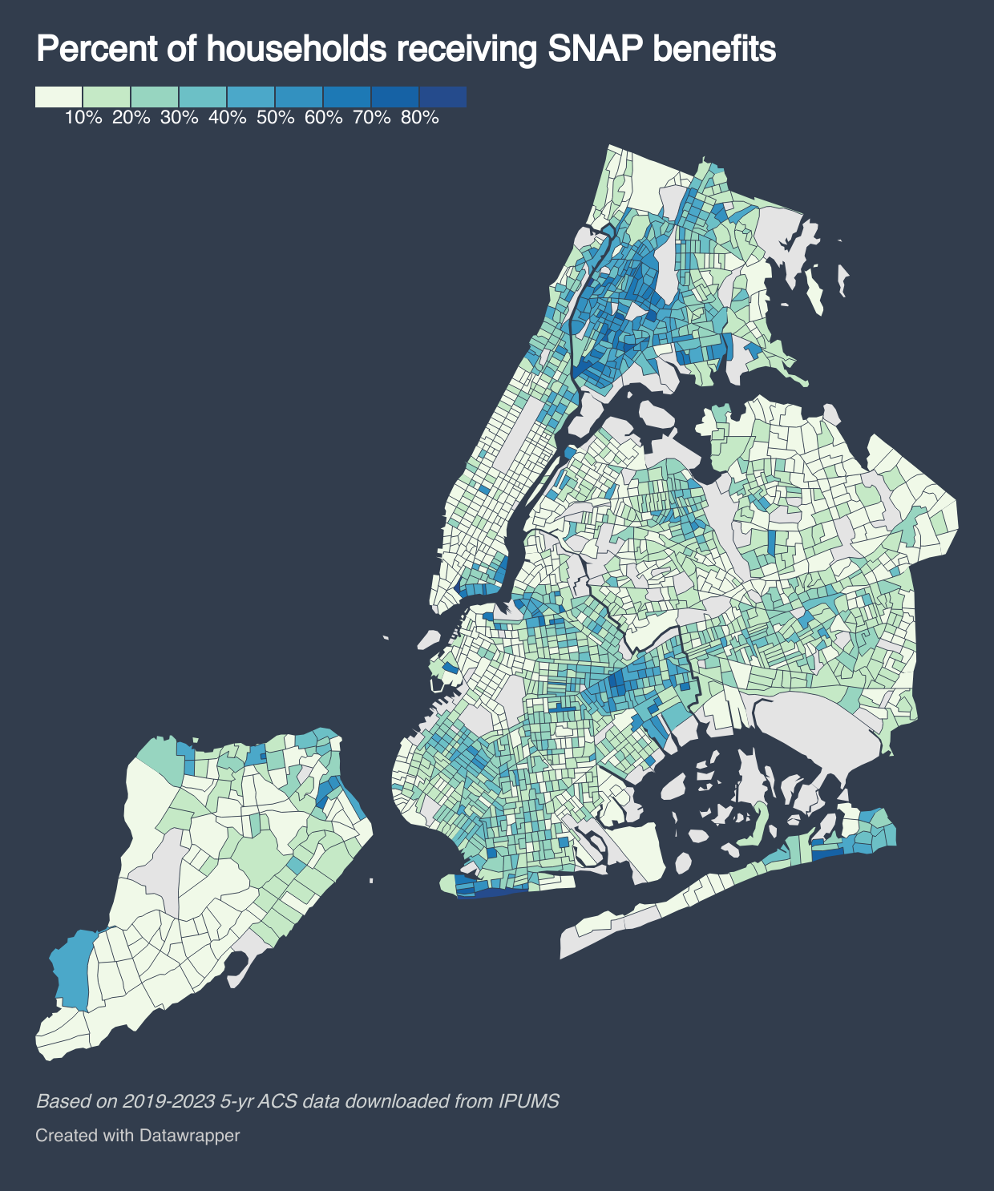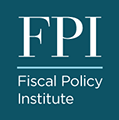Governor Hochul Must Call an Emergency Session to Address Trump’s Hunger Crisis
October 24, 2025 |
With the federal shutdown entering its 24th day, it is now expected that federal funding for SNAP benefits (food stamps) will run out by the end of October. The 3 million New Yorkers (including 1 million children) who rely on SNAP for food security will collectively lose the $700 million per month that they receive in benefits, triggering an immediate hunger crisis throughout the state.
This morning, Governor Hochul proposed a meager $11 million plan to support food banks statewide in order to mitigate the effects of this funding loss—but this commitment pales in comparison to the $700 million per month cost of ensuring food security.
New York should instead commit to replacing the $700 million of lost federal funding out of the State’s $4.1 billion current-year revenue surplus and $29 billion in fiscal reserves. New York’s Congressional delegation should secure reimbursement of these funds from the federal government as part of a deal to end the shutdown. If New York State does not step up, millions will go without their essential food assistance, and food providers will lose much-needed revenue.
How would this be done?
- New York lawmakers should immediately appropriate $700 million towards SNAP benefits for the 1.3 million New York families facing food insecurity starting November 1.
- Allocating State dollars towards SNAP benefits will likely require an emergency legislative session, called by either the governor or 2/3 of the legislature. This must be done immediately.
- State dollars will need to flow into EBT cards for current SNAP participants, requiring coordination between the State and local social service agencies around the state. This coordination will be necessary under H.R. 1’s changes to SNAP funding, which puts more burden on state budgets to fund SNAP and SNAP administration.
- New York’s Congressional delegation must ensure that the State will be reimbursed by the federal government for this expense. This will likely need to be negotiated as part of any deal to end the shutdown.
Table 1. New York State fiscal reserves and monthly cost of SNAP benefits

Alternative Proposal
Transferring State funds to EBT cards under such short notice may prove infeasible. An alternative proposal would channel State dollars to local food banks and other emergency relief organizations (EROs). A strategy like this is underway in California, where Governor Newsom has tasked the National Guard with delivering food to California food banks (and notably not acting as law enforcement).
New York would still appropriate $700 million per month to support anti-hunger efforts. However, rather than transferring funds to social service agencies and EBT cards, the funds would be directed to food banks, soup kitchens, emergency shelters and other EROs around the State that could provide food to SNAP recipients who have not received the benefits that they are entitled to due to the federal shutdown. The State could leverage the Hunger Prevention and Nutrition Assistance Program (HPNAP) to efficiently channel funds to where they are needed around the state.
This approach may be more practical to implement but will likely be less economically efficient as it requires an additional step in food procurement. Further, it may not alleviate the local economic impact of SNAP benefit delays because it will not channel funds to the same local stores and businesses that typically provide food to local SNAP recipients.


Governor Hochul Must Call an Emergency Session to Address Trump’s Hunger Crisis
October 24, 2025 |
With the federal shutdown entering its 24th day, it is now expected that federal funding for SNAP benefits (food stamps) will run out by the end of October. The 3 million New Yorkers (including 1 million children) who rely on SNAP for food security will collectively lose the $700 million per month that they receive in benefits, triggering an immediate hunger crisis throughout the state.
This morning, Governor Hochul proposed a meager $11 million plan to support food banks statewide in order to mitigate the effects of this funding loss—but this commitment pales in comparison to the $700 million per month cost of ensuring food security.
New York should instead commit to replacing the $700 million of lost federal funding out of the State’s $4.1 billion current-year revenue surplus and $29 billion in fiscal reserves. New York’s Congressional delegation should secure reimbursement of these funds from the federal government as part of a deal to end the shutdown. If New York State does not step up, millions will go without their essential food assistance, and food providers will lose much-needed revenue.
How would this be done?
- New York lawmakers should immediately appropriate $700 million towards SNAP benefits for the 1.3 million New York families facing food insecurity starting November 1.
- Allocating State dollars towards SNAP benefits will likely require an emergency legislative session, called by either the governor or 2/3 of the legislature. This must be done immediately.
- State dollars will need to flow into EBT cards for current SNAP participants, requiring coordination between the State and local social service agencies around the state. This coordination will be necessary under H.R. 1’s changes to SNAP funding, which puts more burden on state budgets to fund SNAP and SNAP administration.
- New York’s Congressional delegation must ensure that the State will be reimbursed by the federal government for this expense. This will likely need to be negotiated as part of any deal to end the shutdown.
Table 1. New York State fiscal reserves and monthly cost of SNAP benefits

Alternative Proposal
Transferring State funds to EBT cards under such short notice may prove infeasible. An alternative proposal would channel State dollars to local food banks and other emergency relief organizations (EROs). A strategy like this is underway in California, where Governor Newsom has tasked the National Guard with delivering food to California food banks (and notably not acting as law enforcement).
New York would still appropriate $700 million per month to support anti-hunger efforts. However, rather than transferring funds to social service agencies and EBT cards, the funds would be directed to food banks, soup kitchens, emergency shelters and other EROs around the State that could provide food to SNAP recipients who have not received the benefits that they are entitled to due to the federal shutdown. The State could leverage the Hunger Prevention and Nutrition Assistance Program (HPNAP) to efficiently channel funds to where they are needed around the state.
This approach may be more practical to implement but will likely be less economically efficient as it requires an additional step in food procurement. Further, it may not alleviate the local economic impact of SNAP benefit delays because it will not channel funds to the same local stores and businesses that typically provide food to local SNAP recipients.


